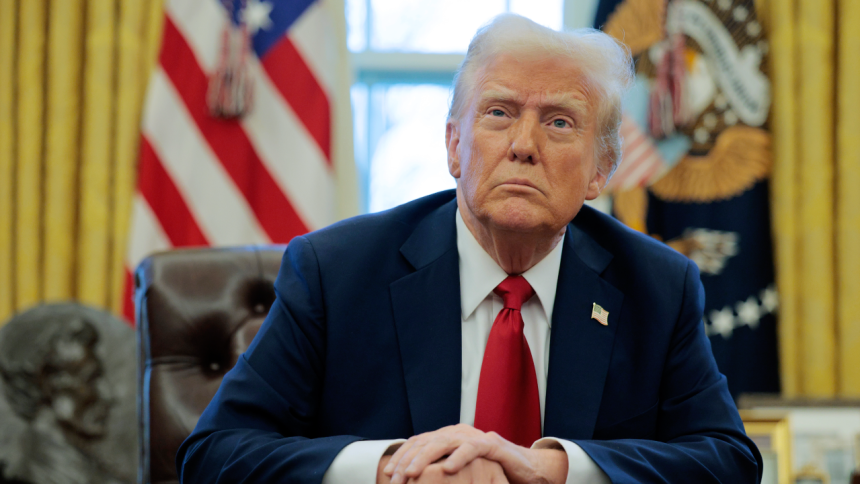A slew of new tariffs and trade rules imposed by President Donald Trump have left world leaders, businesses and consumers in a state of surprise and uncertainty. The new administration recently imposed tariffs on Canada, China and Mexico, the United States’ three largest trading partners.
Trump’s tariffs have the potential to impact small businesses both directly involved in the items and industries that depend on imported goods and those further down the supply chain.
“It has been estimated that if the tariffs remained in place as threatened, it could cost somewhere between $800 to $1000 per person a year,” says Mark Hamrick, Bankrate senior economic analyst. “This is suboptimal given that Americans identified inflation as the top economic issue ahead of the general election. Automakers and homebuilders would be among those affected, further eroding affordability for prospective buyers.”
While tariffs on Mexico have been postponed as negotiations continue, Trump and his administration have expressed a desire to enact tariffs across the board in order to strengthen America’s economy and influence.
Canada, Mexico and China’s tariffs all have the potential to impact small businesses across many industries. Here’s what you should know.
What are tariffs?
A tariff is a tax on an imported product imposed by the government. Tariffs increase the cost of importing goods, with the tariff being paid by the importer.
As a result, importers either have to cut into their profit margins in order to pay the tax or pass the increased costs along to consumers, incentivizing either the importer or consumer to find a less expensive supplier – if one is available.
Why is Trump imposing tariffs?
Tariffs can serve a number of strategic purposes. It can serve as a negotiation method with other countries, using access (or lack thereof) to a consumer market as an incentive for another country to give trade or policy concessions.
This latest round of tariffs have come as a push from Trump in order “to hold Mexico, Canada, and China accountable to their promises of halting illegal immigration and stopping poisonous fentanyl and other drugs from flowing into our country,” according to a White House statement.
Trump has used tariffs as a bargaining method before, threatening Colombia with import taxes and other sanctions when Colombian president Gustavo Petro blocked a plane of deported migrants from Colombia.
Another reason for tariffs is what economists call “protective” tariffs, which is done to protect the manufacturing and consumer economy of a country. For example, a country whose economy is dependent on lumber may place a tariff on imported lumber in order to preserve wages and maintain a more stable economy.
Tariffs on Canada
Trump’s recent executive orders have enacted a 25 percent tariff on all Canadian goods and a 10 percent tariff on Canadian energy. Canada’s prime minister Justin Trudeau has retaliated with his own tariff of 25 percent on American goods.
Canada supplies the United States with crude petroleum ($117 billion), petroleum gas ($22.4 billion), vehicles ($27 billion) and refined petroleum ($15.5 billion). Canada also exports raw aluminum, lumber, recycled copper, motor vehicle parts, canola oil and gas turbines, according to 2022 data from Centre d’Etudes Prospectives et d’Informations Internationales (CEPII).
In kind, the United States sells machinery, cars, car parts and petroleum to Canada as well as meat, grains and alcohol.
States close to Canada may also find themselves impacted by the trade war, as their proximity to the border makes imports a daily necessity.
“Canada is Maine’s largest trading partner and our economy is deeply intertwined with Canada’s economy,” Maine’s governor Janet Mills said in a statement. “Maine businesses and Maine people rely on Canada not just to sell and purchase goods, but as a major source for energy, from heating fuel to gasoline to natural gas to electricity.”
Tariffs on Mexico
Mexico is the United States’ chief international trading partner, accounting for 15.4 percent of all imports and 26.9 percent of exports in November 2024 alone, according to the U.S. Census Bureau.
Mexico’s chief products include vehicles as well as machinery parts, consumer electronics, beer, spirits and produce such as avocados, tomatoes, bell peppers and strawberries.
While tariffs have been postponed, future trade restrictions would likely impact restaurants, grocery stores, car sellers and repair shops. Consumers squeezed by grocery prices may spend less at local businesses.
Tariffs on China
Trump has proposed a 10 percent tariff on all imports from China. Many retail goods and raw materials essential to American business will be tariffed as a result, including computers, broadcasting equipment, electronics, office equipment, toys, video game consoles, motor vehicle parts, clothing and textiles.
Plastic in particular represents $31.9 billion of China’s $551 billion export volume (about 5.8 percent), and has the potential to impact business costs for everything from plastic packaging and good containers for restaurants to plastic piping and flooring for construction companies.
As a result, tariffs are predicted to raise prices across the board for both goods and operational costs for businesses.
De minimis rule
While not directly related to tariffs, Trump has also slashed a key loophole that allowed for cheap imports: the de minimis rule.
De minimis (Latin for “of the minimum”) is a rule that allows for shipments under $800 to bypass customs inspections, import taxes and other fees and regulations if the product is shipped directly to the consumer.
Online retailers like Temu and SHEIN have used this loophole to ship merchandise directly from manufacturing facilities to customers in the United States, offering extremely low prices on clothes and other consumer goods.
While this rule may spike prices for cheap goods from China, some argue that this will be a boon for small businesses, allowing American manufacturers and retailers to compete on more even grounds with international merchants.
Can American businesses keep up?
Proponents of Trump’s tariffs and trade policies argue that the tariffs are more than just a bargaining chip. Tariffs encourage a more insular, self-sustaining economy based on American goods and manufacturing.
While this has the potential to create both a more resilient economy and strengthen revenue for American businesses, breaking away from the global trade network America has come to depend on isn’t a process that can successfully happen overnight.
“There’s no optimal timing for imposition of tariffs,” McBride says. “If the tariffs as ordered do take effect, businesses will have to consider how much of this tax increase they’ll pass along to consumers. For lower margin businesses like groceries, I’d expect that much of the entire added cost would be passed along. Some businesses have said they’ll source elsewhere as possible, but some have little choice.”
Read the full article here














